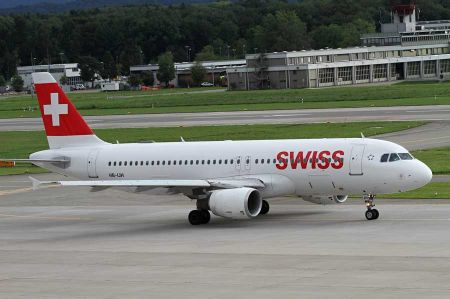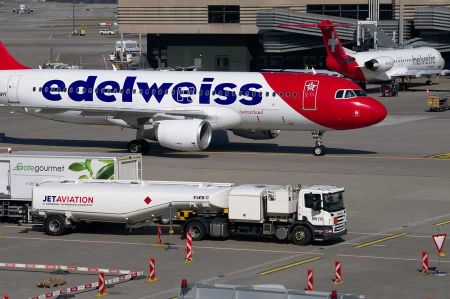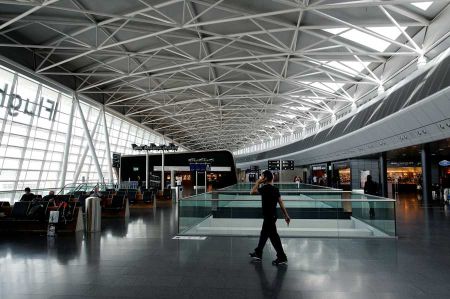Highly decorated - Zurich Airport in Switzerland
- Written by Portal Editor
Zurich Airport (IATA code: ZRH, ICAO code: LSZH) is the largest and most important airport in Switzerland operated by the listed Flughafen Zürich AG.
In 2018, the airport received the World Travel Award in the “Europe's leading airport” category for the 16th time in a row. The Skytrax Award also counts Zurich Airport as one of the 10 best airports in the world every year by millions of travelers, and in 2017 it was the first in the “20–30 million passengers” category.
The airport is located 13 kilometers north of the center of the city of Zurich in the municipality of Kloten. The airport area also extends to the communities of Opfikon, Rümlang, Oberglatt and Winkel. The airport serves as a hub for several airlines and is the home airport for Swiss, Edelweiss Air and Helvetic Airways. The headquarters of the Swiss Air Rescue (Rega) is also located at Zurich Airport. Together with Geneva and Basel airports, it is one of the three so-called national airports in Switzerland.
Here you can find the departure times
Here you can find the arrival times
An example for imitation - pollutant-dependent landing fees
 In 1997, Zurich Airport introduced landing fees based on pollutants, with the aim of reducing emissions from air traffic.
In 1997, Zurich Airport introduced landing fees based on pollutants, with the aim of reducing emissions from air traffic.
Aircraft noise, on the other hand, is a constant controversy between Switzerland and Germany, so there has been a dispute that has lasted for decades and has been discussed at the highest political level since 2000. It is about aircraft noise over municipalities in southern Germany caused by aircraft flying to Zurich Airport in Switzerland.
Both sides declare to strive for a fair distribution of the burdens. But the German side counts the number of flight movements and finds it unfair that 90 percent of all approaches lead over German territory (before 2002), while the Swiss side counts the noise pollution according to the persons affected. According to this, it is unfair if, since 2003, around 210,000 people in Switzerland and 750 people in Germany have had to endure aircraft noise pollution of 50 decibels around Zurich Airport.
After a state treaty negotiated in 2001 was rejected by the Swiss parliament, the German side unilaterally limited the number of overflights in 2003 and completely banned arrivals and departures between 9 p.m. and 7 a.m. (weekdays) and 8 p.m. and 9 a.m. (weekends). Since then, the dispute over aircraft noise has largely taken place within Switzerland in the canton of Zurich and its neighboring cantons of Aargau, Thurgau and Schaffhausen. Instead of counting aircraft movements, the actual strength and duration of aircraft noise exposure is preferred as a measure of distribution, which is politically implemented in the Zurich aircraft noise index.
After Germany insisted on restricting the number of flights for years and refused new negotiations, the Swiss government, during a visit by Chancellor Merkel in April 2008, achieved that a German-Swiss working group should first create an objective basis for the comparability of aircraft noise pollution.
The distribution of arrivals and departures on the various runways has also been a purely local issue since the German restrictions, as has the regulations of the night flight ban. The “Protection Association of the Population around Zurich Airport” wants rules that are as restrictive as possible. On the other hand, the “Zurich Cosmopolitan Committee”, which has also been in existence for 50 years, is committed to ensuring that the airport functions as well as possible.
Airport docks and runways
 The runway system at Zurich Airport consists of three runways: 16/34 with 3700 m length, 14/32 with 3300 m length and 10/28 with 2500 m length. The airport has three docks A, B and E.
The runway system at Zurich Airport consists of three runways: 16/34 with 3700 m length, 14/32 with 3300 m length and 10/28 with 2500 m length. The airport has three docks A, B and E.
Fingerdock B was the oldest dock with passenger boarding bridges and was temporarily shut down with the opening of Dock E in autumn 2003 in response to the falling passenger numbers. From August 2005 to summer 2008 it served as a so-called event dock, which could be rented for events. From autumn 2008 the existing Dock B was completely dismantled and replaced by a new building at the same location by the end of 2011.
Dock E is located between slopes 10/28, 16/34 and 14/32. It is accessed via the Skymetro air-cushion track, a road tunnel and underground baggage conveyor belts. The Airside Center between Dock A and Dock B. a passenger can go through passport controls at any location and still get to their gate or the right baggage conveyor belt.
In 2018, Zurich Airport counted around 31.1 million passengers and 278,000 flight movements. The freight volume was 493,000 tons.
Transport links to Switzerland and internationally
The airport can be reached via a junction of the A51 motorway, Hauptstrasse 4 and various airport tangents.
Since the airport route opened in 1980, all long-distance trains between Zurich and Winterthur have run through the underground Zurich Airport train station. This enables direct train journeys without having to change along the longitudinal axis of Switzerland between Geneva or Bern to Romanshorn. The station is also served by lines S2, S16 and S24 of the Zurich S-Bahn. Travel times between the airport and Zurich HB are between 9 and 12 minutes.
Local transport is provided by numerous regional bus lines, as well as tram lines 10 and 12 that run on the Glattalbahn.
Please also read:
Favorite markets in Zurich - weekly market at Bürkliplatz
Aventicum - amphitheater and Roman theater beckon
